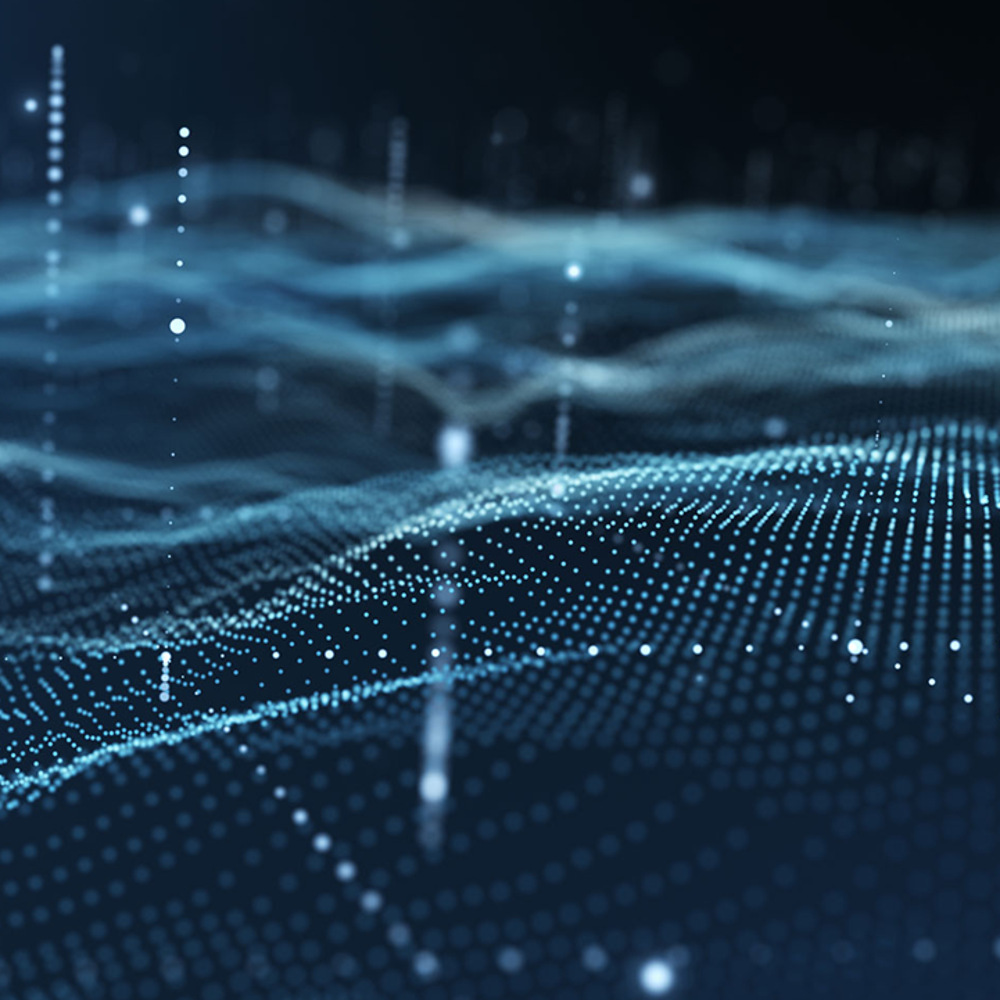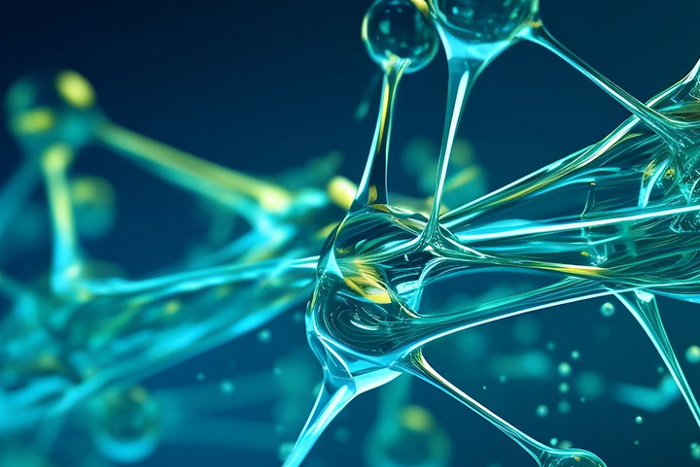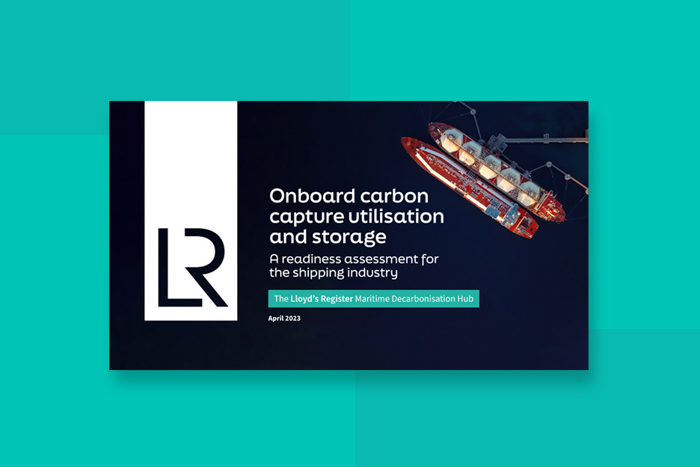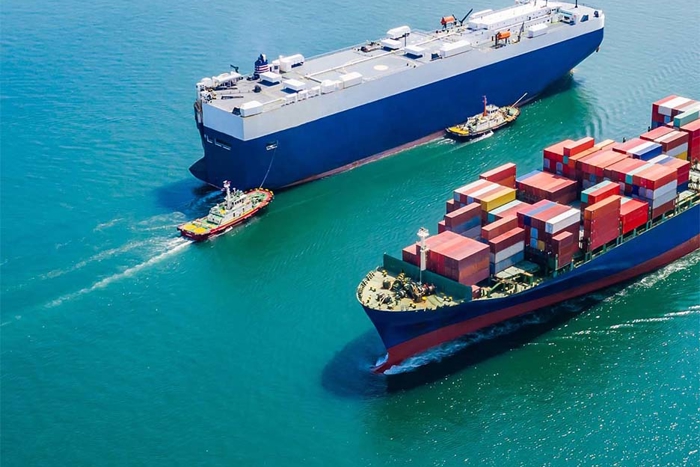With the adoption of a revised strategy to reduce greenhouse gas emissions to net-zero by or around 2050, the IMO’s revised GHG strategy represents a significant acceleration in the reduction of emissions compared to the strategy agreed only 5 years ago. This means that shipping is much closer to alignment with the 2015 Paris Climate Agreement target of keeping global temperature increases within 1.5 degrees Celsius of pre-industrial levels. In addition, there are targets for reducing carbon emissions at indicative checkpoints of 20% by 2030 and 70% by 2040, compared to 2008.
But, whilst there was agreement on the strategy, several key technical and regulatory amendments and milestones are still yet to be agreed upon. Notably, the selection of mid-term measures is not expected to be approved until MEPC 83 in Spring 2025.
As well as this, the anticipated discussions regarding onboard carbon capture systems (CCS), with the potential to inset some of shipping GHG emissions, have been delayed due to differences in opinion over whether the CO2 capture should be considered a part of the fuel life-cycle analysis framework or as a separate workstream. The proposals related to the onboard CCS have been forwarded to ISWG-GHG 16 for further consideration, but only if time permits, prior to the potential review by MEPC 81 in April 2024.
As your trusted advisers, LR’s team of experts are here to help make sense of the uncertainty and shifting regulatory and technical landscapes. We can help you to develop a strategy that will protect the future of your fleet.

MEPC 80 Webinar: Questions and answers
| Question | Answer |
| When will the Biofouling Guidelines enter into force? |
The 2023 Biofouling Guidelines entered into force on the day they were adopted by MEPC, 7th July 2023. However, at this point in time, they are non-mandatory within the IMO. Therefore, unless a flag State stipulates that these guidelines must be enforced, the shipowner may voluntarily use them. However, should one or two administrations decide to apply these Guidelines to ships entering their ports, then this may have the effect that any ship entering the ports of those Administrations would have to apply the guidelines, irrespective of their own flags position. Noting this, it is entirely possible that this Guidance will become mandatory within the IMO in the coming years. Combined with the potential energy efficiency gains from applying the guidelines, it would be prudent to take good note of the actions set out in the Guidelines today. |
| What recommendations do the updated Guidelines note for the removal of biofouling on a ship’s hull? (e.g. ultrasonics?) Does LR have a position on the best methodology for removing biofouling to a ship’s hull? |
The best practice recommendations for the removal of a ship's biofouling need to be considered on a case-by-case basis. LR can provide advisory services to undertake a feasibility study to determine the best technology/option for the ship’s niche areas and hull, including evaluating and ranking different technologies available. LR is also developing test requirements for such technologies and is working with several manufacturers to evaluate their testing and performance capabilities. |
| Question | Answer |
| When will the interim biofuel guidelines be effective? | They are effective immediately, although clearly, there will need to be a period to allow implementation of the new requirements. |
| Specifically, what biofuels will meet the 65% GHG criteria set out in the interim guidelines? |
The interim guidelines refer to international certification schemes for the assessment of sustainability criteria. In certifying the biofuels, many factors are considered, such as feedstock source, direct and indirect land use change, emission during production and transportation, etc. So, it is difficult to say outrightly which biofuels meet the criteria. The only way to determine this is to look at the sustainability certificates issued by certifying bodies such as ISCC or RSB and confirm the well-to-wake emissions of that biofuel with the given value of MGO in the interim guidelines. Any biofuel which has well-to-wake emissions of 33 gCO2e/MJ or less is considered compliant. Please note that most of these certificates also refer to EUs Renewable Energy Directive (RED II, document ref L328/156), where typical GHG emission values have been given for various biofuel feedstocks from different production pathways. |
| Will ISO 8217 also be updated with biofuel specifications for bunkers' quality? | The ISO 8217 working group has been working to update the standard. The new standard will include specifications for biofuel blends with residual fuels. The new standard is expected to be out by mid-2024. |
| How will the biofuel certification noted in the interim guidance work in practice? |
Fuel producers, who wish their products to be certified, will get their products certified by complying with the requirements of the certification schemes. Details can be found on the relevant websites. |
| Who is responsible for providing the CO2-emission-correction factor for a biofuel? | Fuel suppliers should provide such information and supporting documents. Per the interim guidelines, the sustainability certification from International Sustainability & Carbon Certification (ISCC) and Roundtable on Sustainable Biomaterials (RSB) are accepted. |
| There are different generations of biofuels (from where they are produced). Is there going to be a difference between a first-generation biofuel (directly from a crop which could be used to feed a community) or a fourth-generation (from algae fatty production)? |
The sustainability certification bodies investigate the whole supply chain and then assess its sustainability against different criteria such as feedstock source, direct and indirect land use change, processes involved etc. Biofuel producers calculate GHG emissions for their industry processes that ISCC auditors then verify. So yes, the well-to-wake emissions will be different for different feedstocks and the production processes involved. |
| Are biofuels the same as the e-fuels / synthetic fuels that are being developed? |
Biofuels are made from biomass used as feedstock. In contrast, synthetic fuels are produced by chemical conversion of hydrocarbon molecules into synthetic liquid products. Depending on the feedstock and production process, a fuel from biobased feedstock can be biodiesel (biofuel) or e-diesel (synthetically produced fuel). In general, when we use the term biofuel, it is not e-fuel. E-fuels are synthesized from e-hydrogen made from green electricity and water electrolysis. E-fuel production must use renewable electricity derived from naturally replenished sources such as solar, wind, hydroelectric, or geothermal energy to achieve real benefits and achieve such low emissions. Visit the zero carbon fuel monitor to learn more about future fuels |
| Question | Answer |
| Noting the BWM.2/Circ.78 Protocol for verification of Ballast Water compliance monitoring devices that was adopted at MEPC 80, how will this be used by PSC to make sure the D2 discharge standards are followed? |
The protocol establishes verification standards for CMD devices to be tested and validated. If PSC chooses to use sampling and analysis to ensure the D2 discharge standards are followed, this is most likely to be undertaken using CMD as they offer relatively easy use and speedy analysis results. Going forwards, it is likely that for both PSC and commissioning testing use of a CMD verified as per the protocol requirements, will be the preferred option. |
| Question | Answer |
| Of the different carbon capture technologies available to shipowners today, what is the best option for shipowners? |
Unfortunately, the discussion around Carbon Capture is still in the early stages and too many unanswered questions remain. Answering these questions will depend on the industry's operations, available technology and regulatory appetite from different flags and port states, etc. |
| The use of carbon capture seems misaligned with the principle of reducing the use of fossil fuels, so noting the ongoing discussion on carbon capture within IMO, is the goal of the organisation to reduce emissions rather than reduce the use of fossil fuels themselves? |
Reducing fossil fuel emissions cannot happen instantly; there needs to be an industry-wide step change to achieve the goals we have seen set in the IMO 2023 GHG strategy. The IMO GHG strategy sets an ambition for zero or near zero emission fuels or energy sources with a 5% update by 2030, which implies that there needs to be a paradigm shift away from fossil fuels. As an industry, we know that the decarbonisation transition needs to start today. Steps need to be taken to enable assets operating today to move further along the decarbonisation pathway towards net zero emissions. Carbon Capture is one of the technologies that can help existing assets in this journey to reducing GHG emissions. As such, we may find that carbon capture as a technology is time-limited as existing infrastructure and assets are replaced by newer zero-emission technologies. |
| Is it likely that Carbon Capture will be permitted as a viable offsetting tool within the LCA guidelines? |
Its certainly a possibility, but until further discussions take place at ISWG-GHG 16 and beyond, its impossible to provide a definitive answer. |
| Question | Answer |
| How will the BDN system be enforced? Noting that not all BDNs are comprehensively completed when particularly if details are not provided by the bunker supplier? | Enforcement, if any, would be through the ship's flag State. If there are instances of non-compliance, then that would need to be raised through them to raise with the port State, or alternatively, it could be brought up during a PSC inspection if that was underway. |
| Regarding the electronic bunker delivery notes, does this mean the IMO is open to accepting book & claim fuel certification schemes in the future? |
IMO LCA Guidelines are based on the attributional method, and the accounting principles will be based on Mass Balance (as per IPCC etc.) and not on a Book & Claim system. Between now and the next MEPC (81st session), verification/certification schemes will be defined and finalized as part of the IMO LCA Guidelines, and thus more clarity will be given on that aspect, however, it seems very unlikely that IMO will adopt a book & claim system. |
| Question | Answer |
| What are the long-term fuel options that are going to be available to the industry, and how is the strategy influencing this? |
The overall industry's future fuel mix will be determined mainly by the cost and availability of resources. It is known that e-fuels availability is limited by renewable energy capacity, and biofuels are limited by sustainable feedstock availability. To assist in determining the long-term fuel options available, LR has produced The Zero Carbon Fuel Monitor, which identifies key priorities for fuel supply chain stakeholders to deliver an efficient, safe and sustainable transition to zero carbon marine fuels. An insight-based assessment of fuel readiness provides the basis for effective decision-making as the maritime sector navigates the journey to a decarbonised future. The 2023 strategy sets a clear ambition for the uptake of zero or near-zero emission fuels or energy sources of 5% (striving for 10%) uptake by 2030 as well as the indicative checkpoints at 2030 and 2040 to reduce GHG emissions by 20% and 70% respectively. As such, this is likely to encourage the uptake of alternative fuel sources, such as biofuels, earlier within the timeline to meet these targets. |
| Have the impacts on IBC Code and Annex II been considered with respect to alternative fuel usage and the transportation of such products? |
At this point in time, impacts on the IBC Code have not been considered. However, it would be expected that the necessary consequential and supporting amendments will be proposed and agreed upon as the industry's use of alternative fuels increases, and more clarity is gained around the most commonly used fuel types. |
| Question | Answer |
| Within the 2023 GHG strategy, what does accounting for national circumstances mean? |
Every nation under the Paris Agreement is expected to submit an updated national climate action plan - known as a Nationally Determined Contribution (NDC). In their NDCs, countries will communicate actions to reduce their GHG emissions to reach the agreement's goals. As such, each nation will have a slightly different approach to reaching the 1.5 deg C target set by the Paris Agreement, which will be dependent upon economics, population, and development of the country, to name some factors. The IMO GHG strategy sets a clear 2050 net zero target which will have global applicability. |
| How does the strategy apply to Naval ships? | IMO, requirements do not normally apply to naval ships. |
| How will the 2023 GHG strategy drive the establishment and operation of green corridors? |
The 2023 IMO GHG strategy has provided clarity to the industry in the direction that regulations are moving in through the increased ambitions and indicative checkpoints that have been set.
Therefore a lot of regulatory uncertainty has been removed in a broad sense, particularly in terms of the direction and speed of travel that the industry must take. As such, in the coming years, we should expect the industry to focus on the specific details that will need to be implemented to meet the targets outlined in the revised strategies. This may be seen through greater support for first-mover initiatives, including green corridors.
The partnership of both the public sector and private sector is needed to help address the major hurdles in the establishment of green corridors and bridge the cost gap. Green corridors also need to see the stronger engagement of governments to deliver on their ambitions, and the 2023 IMO GHG strategy will hopefully help to stimulate this engagement.
|
| What is the 2008 baseline referred to in the 2023 strategy? |
The 2008 baseline refers to the estimates of the carbon intensity of international shipping for 2008 as presented in the 4th IMO GHG Study, published in 2020.
|
| Have any measures been adopted to help achieve the requirements of the 2023 strategy? |
No new mandatory requirements have been adopted at the conclusion of MEPC 80. However, this is where the next policy steps from IMO are vital, as without mandatory requirements achieving the ambitions set in the strategy could be challenging.
Therefore we should anticipate that mandatory measures will be put into place in the near future, and clarity will be gained as to what these may be as the discussion progresses on the mid-term basket of technical and economic measures.
|
| What challenges do you see in implementing the 5% use of low-carbon and zero-carbon fuels? Is this target realistic? |
Many in the shipping industry had already been working toward this target. The November 2022 report by the United Nations High Level Climate Champion for shipping showed clearly that the 2030 5% target is within reach. The report finds that the key now is ensuring that the commitments and ambitions are delivered upon to achieve the 2030 5% target.
There will be a need for rapid investment in near-zero and zero GHG emission fuels and machinery solutions. Many investors may prefer to wait until there is a clearer regulatory framework and higher certainty to drive investment. However, waiting for regulation to be developed will present its own risks (missing opportunities, increasing costs).
Therefore a balance is needed between now and 2027 when clearer regulatory frameworks are anticipated. This balance could be driven by national government and industrial strategies combined with regional policy measures to lower investment risk.
|
| Is there a clear definition of what net zero means? |
Although there is no clear definition of net zero set out in the 2023 IMO GHG strategy. It is clear that going forward, GHG emissions will be measured on a life cycle (WtW) basis, as outlined in paragraph 3.2 of the 2023 strategy. During the discussions leading up to the strategy agreement, the majority of the negotiating member States preferred net zero not to include offsetting and for this to be clearly defined. |
| How will the indicative targets be measured to determine if the industry is on track? |
The indicative targets will be measured using the current short-term measures, such as CII, supported by the mid-term measures (anticipated entry into force in 2027). The LCA guidelines will also be instrumental in calculating and understanding the GHG emissions and intensity of fuel in its lifecycle, thereby providing additional information about how close the industry is to the indicative targets. |
| Are the ambitions set out in the strategy, particularly the percentage reductions noted based on the number of vessels in the global fleet or Gross tonnage? |
The percentage reduction of CO2/GHG emissions set as ambitions in the 2023 GHG strategy are based on global CO2 equivalent emissions and are not based on the current fleet size (i.e., number of vessels or gross tonnage). |
| How is IMO going to go about evaluating the proposed basket of measures? |
The candidate economic elements will be impact assessed by a steering committee (to include flag States and external organisations such as UNCTAD) against specific criteria (agreed upon at MEPC80), with a view to facilitating the finalisation of the basket of measures.
A finalised report on the comprehensive impact assessment of the basket of candidate mid-term measures is anticipated at MEPC 82 in Autumn 2024. Those measures meeting the impact assessment criteria will be considered for finalisation as a mid-term technical/economic measure to enter into force in 2027.
|
| How would LR recommend shipowners meet the indicative targets set within the strategy? |
Each situation and fleet is going to be unique. A wide variety of factors will need to be considered in order to produce the most optimised proposal. That is where LR can help; please approach your local client office for further information.
|
| Are the indicative targets set on a WtW basis? |
Yes, the indicative targets for GHG emission reductions for 2030 and 2040 are set on a WtW basis.
|
| How will the strategy impact the energy transition in port facilities? |
IMO's 2023 GHG strategy has set a clear target for uptake of zero or near-zero GHG emission technologies, fuels and/or energy sources to represent at least 5%, striving for 10% of the total energy used by international shipping by 2030.
In this regard, the port facilities have a key role in developing their infrastructure to support the use of onshore power supply (OPS) for shipping. OPS will be key at the individual ship level to improve CII ratings and cut GHG emissions, which will feed into the ambitions set in the IMO 2023 strategy.
Further, it is anticipated that revenue generated through any established economic mid-term measures could be used to incentivise further projects related to zero or near-zero GHG emission technologies.
|
| How will the energy efficiency reduction ambitions be met for new and existing ships? |
The strategy states that the carbon intensity of ships is to decline through further improvement of the energy efficiency of new ships, reviewing and strengthening the EEDI requirements.
Similarly, overall the carbon intensity of international shipping is to decline through a reduction of CO2 emissions per transport work, as an average across international shipping, by at least 40% by 2030, compared to 2008.
It is currently unclear how the EEDI for new ships and CII for existing ships will be strengthened, as it will depend on the outcome of the review of the short-term measures (due 1 January 2026).
As part of this consideration, work will likely be undertaken to consider how the WtW life cycle assessment can be applied to the CII metric to strengthen it.
|
| WTW and Supply Chain data collection and measurements are key to the success of holistically reducing GHG as an industry. What are your ideas on making those measures accurate, complete, incorruptible, and objective? |
These will be addressed through transparent standards and established verification. LR is working with clients to establish these standards and provide certification accordingly.
|
| Question | Answer |
| Can more detail be provided on how sustainability has been considered in the LCA Guidelines and, in particular, the risks of displacing GHG reductions from land to produce the new e-fuels for the maritime industry? |
The sustainability of marine fuels should be assessed based on the following metrics (applied on a life cycle basis):
|
| What is the difference between WTW GHG emission values and TTW GHG emission values for the shipping sector? | Well to wake emissions, look at the cumulative emissions from all stages, from fuel production, through to transport to the asset, bunkering and then the use onboard as a power source. Tank to Wake emissions only consider the emissions associated with the fuel used during the operation of the ship. |
| Will the LCA Guidelines be applied to CII? | It is unclear at the moment if the LCA guidelines will be applied to the CII metric. The CII metric is being reviewed along with the other short-term measures in place. One assessment will determine if the CII metric can be strengthened and applied on a WtW basis as per the LCA Guidelines. |
| For LCA, is IMO planning to consider GWP 20 or GWP 100? | The GHG emissions are calculated as CO2-equivalent (CO2eq), using the Global Warming Potential over a 100-year time horizon (GWP100) to convert emissions of other gases than CO2, as given in the fifth IPCC Assessment Report7, for CO2, CH4 and N2O. These GWP100 values should be used for the purpose of quantifying the GHG intensity in accordance with these guidelines. A calculation using a Global Warming Potential over a 20-year horizon (GWP20) may be provided as information for comparative purposes. |
| Do the LCA Guidelines take into account CO2, CH4 and N2O, and are there any plans for IMO to refresh and enhance the emissions factor to be used to calculate shipping emissions? |
The adopted LCA Guidelines provide WtT GHG emission factors quantified consistently with the attributional approach and TtW GHG emission factors accounting for CO2, CH4 and N2O.
A continuous review process is noted within the adopted guidelines, which will ensure that new technological advances and scientific knowledge are considered. As such, the default emission factors for WtT, TtW and WtW will be kept under review and updated as required.
|
| Question | Answer |
| How are the short term measures being reviewed and what will happen at the end of that review process? | CII (and EEXI?) have a fixed review clause built into the relevant MARPOL Annex VI regs. We encourage governments and industry to contribute their experiences to that review process. MEPC 80 set out a timeline for this review process to be concluded by 1 Jan 2026. |
| Question | Answer |
| What does a reduction of CO2 emissions per transport work (CII?) by 40% entail from CII point of view? What will the Value of Z (year-on-year reduction) post-2026 be? |
The agreed target of reducing CO2 emissions per transport work by at least 40% by 2030 (compared to 2008) within the 2023 GHG strategy is the same as the target set in the initial GHG strategy in 2018. In this regard, this should not change or influence the agreed CII requirements. Further, the CII annual reduction factor (Z) is not yet confirmed post-2026.
The Z factor will be considered as part of the short-term measures review due for completion by 1 January 2026. However, in our understanding, the reduction factor (Z) could follow the current trend of a 2% reduction year on year to achieve the CII reduction targets set in the 2023 GHG strategy. |
| How can zero or near zero carbon fuels be used for CII compliance? |
Zero or low-carbon fuels will have less carbon intensity, improving the ship's CII rating. |
| Will small craft or high performance craft be required to comply with CII? |
Currently, CII only applies to certain types of vessels of 5000GT or over. The applicability to other vessel types and sizes may be considered as part of the short term measures review, due for completion by 1 January 2026. |
| Are there any correction factors being considered for passenger vessels, noting to reduce the CII rating, more time needs to be spent at sea, thereby burning more fuel? |
Following the MEPC80, there have been no correction factors agreed for passenger vessels and other vessel types at this stage. All the proposed CFs are being considered as part of the short-term measures review due for completion by 1 January 2026. |
| How will short term measures, particularly CII, be enforced going forwards? |
Within MARPOL Annex VI the EEXI enforcement is clear. CII enforcement is likely to be increased after the 2026 review. How it will be enforced will be dependent on the outcome of the discussions in the coming months. |
| When is the verified CII value available for administration issuing compliance certificates to individual ships? |
The CII rating should be available typically within 2 months of the data reporting. The reporting and submission of the CII data for the calendar year (Jan to Dec YYYY) should be done within 3 months from the end of the calendar year (i.e, before March YYYY+1) |
| Question | Answer |
| How do the amendments to the DCS system to include the reporting of transport work apply to different ship types? |
The amendments agreed at MEPC 80 clarify that the "total transport work" may be reported differently for different ships using metrics based on ship type. The reporting may be done using tonne-mile and TEU-mile metrics for containerships and similarly using tonne-mile and passenger-mile metrics for passenger vessels, as appropriate (based on ballast/laden voyages). Further, the requirement to collect and report "transport work" data applies only to those ships which are required to comply under regulation 28 of MARPOL Annex VI. |
| What increased granularity can we expect to see in the DCS system from 2025? |
Separate Fuel oil consumption data reporting requirements have been added to Appendix IX of MARPOL Annex VI to increase the granularity of the DCS system. These include reporting on:
|
| What is the date of in force for Amended Marpol annex VI reg 18.5? |
Likely to be mid-2025. We won't know for sure until MEPC 81 next April.
|
| How reliable is ship-reported fuel consumption in reality? |
A difficult question to respond to as there are a number of possible variables. However, as the monitoring becomes more granular, it would logically indicate that the accuracy should improve.
|
| Question | Answer |
| Will an international economic measure be in addition to a regional system? | How regional measures integrate with global measures will be up to the regional regulators to decide. The EU has indicated they don't intend to maintain duplication if, IMO can introduce something at least as stringent as their requirements on an international level. The USA have indicated something similar in its draft Clean Shipping Act. However, time will tell. |
| What is meant by a goal based fuel standard? | A Goal Based Fuel Standard has been proposed as a possible technical element for further development as part of the mid-term measures. It is intended to mandate phased reductions in the GHG intensity of marine fuels over time. Ships would be able to meet these reduction targets by using compliant fuels. Limiting and reducing the GHG-Intensity of fuels, the GFS will help drive shipping along the path towards decarbonisation. In short, this may be considered as a "GHG intensity standard". |
| Question | Answer |
| How can all stakeholders across the maritime industry work together to address skill gaps and provide training to ensure ongoing crew competency when operating ships using new technologies and fuels? |
There is a comprehensive review of the STCW Convention being scoped at present in the Human Element Training and Watchkeeping (HTW) sub-committee. This will almost certainly include competency to use different energy sources from the traditional ones. The 2023 GHG Strategy also includes a provision to address the human element of the energy transition.
It is worth noting that the Maritime Technologies Forum (a group of flag States and classification societies) published a report on Operational Management to Accelerate Saft Maritime Decarbonisation, which identifies potential gaps to achieve safe maritime decarbonisation within three existing Conventions / Codes: The International Safety Management (ISM) Code, International Convention on Standards of Training, Certification and Watchkeeping for Seafarers (STCW) and The Maritime Labour Convention (MLC); and makes suitable recommendations to close these gaps for future safe use of alternative fuels.
Further to this, there is ongoing work within IACS (International Association of Classification Societies) within their Safe Decarb Panel to address this topic. |
| Question | Answer |
| Will the management URN become a mandatory requirement for ships, particularly concerning a vessel's Energy Efficiency? |
The discussions on URN and Energy efficiency are at a very early stage. More details on the direction of travel for this area of work will hopefully become clearer after the expert workshop is held in September. At the current time, there is no discussion on any development of mandatory requirements surrounding URN and Energy Efficiency. That is not to say it will not happen at some point in the future, but there is no way of knowing at this stage. |
| What do we know so far about the relationship between URN and EE? |
For existing ships, generally, we know that reducing operational speeds with the initial purpose of reducing GHG emissions will also have the added benefit of reducing maximum/peak underwater radiated noise (URN) levels.
We know that extra time at sea due to reduced transit speed will result in extra energy costs (from heating/cooling, boilers, etc.), but the fuel saving is still significant (albeit more so for cargo ships rather than cruise ships which have high energy consumption in addition to propulsion energy needs).
There are some nuances to this at the ship level, as although the maximum URN level may be reduced, there are likely to be frequency changes, possible ship and machinery natural frequency considerations, and increased continuous lower-intensity noise exposure duration. These impacts will need to be understood in terms of their impact, particularly on the marine environment.
For new builds, this is where there is more potential flexibility in the industry's ability to improve both URN and Energy Efficiency. As shipping continues on its decarbonisation path, we may start to see shifts in the existing paradigm of speed in preference to efficiency.
If ships operated in a world where delivery time is no longer a charter issue and only EE and URN are considered, the case for improved ship design is opened, with opportunities for optimal hull and propeller matching, increased attention to machinery selection and mounting, to name a few. |













